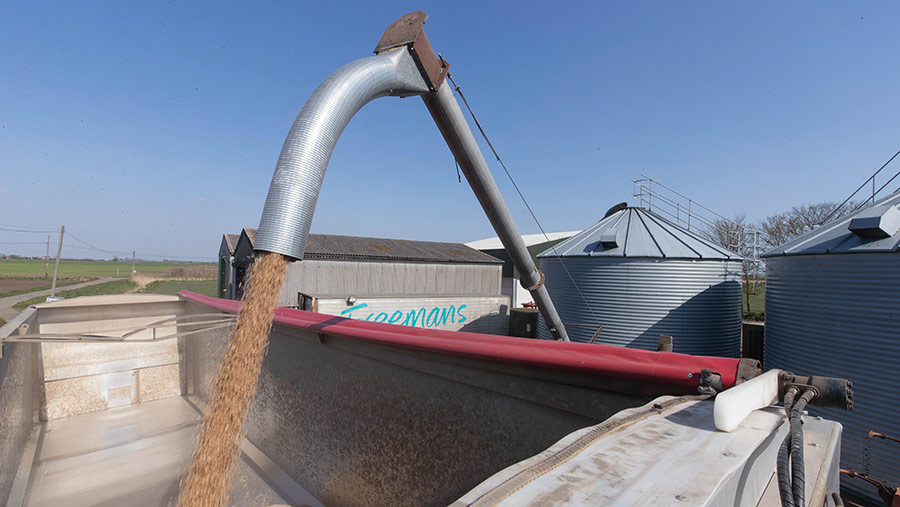UK feed wheat nears £180/t with potential gains in new year
 © Tim Scrivener
© Tim Scrivener Arable farmers could see more support for wheat prices in early 2024 with poor new-crop plantings reported across the UK and Europe, and improved demand from China offering some support to markets.
Since harvest, wheat has remained within a fairly tight price range, with ex-farm feed wheat averaging £178.80/t on 8 December.
However, as the wet weather continues to disrupt plantings across the Continent, future price rallies are becoming more likely.
See also: Straights feed prices hold firm, but remain down on the year
Frontier traders said support for prices had been provided by an uncertain UK wheat production outlook for 2024, as wet weather sets in again.
UK feed wheat futures opened at £195.50/t on 12 December for the May 2024 contract, while the November 2024 contract was at a £13/t premium at £208.50/t.
Plantings down
James Bolesworth, managing director at grain analyst CRM AgriCommodities, said the winter wheat area in France was back by 5% to the second-lowest level since 2003, and plantings in Germany and Poland were also lower.
In the UK, he said farmers had reported new-crop plantings were anywhere from 10% to 50% behind on the year due to the poor weather.
Improved demand for wheat from millers and for human and industrial use has been more than offsetting reduced animal feed demand, according to Mr Bolesworth, which is also offering some support to prices.
Furthermore, Russian wheat prices have reportedly started to rise and export volumes from the region have slowed, which could offer some relief to European farmers and support to prices.
Mr Bolesworth concluded that there could be scope for some modest price rises in the new year if these trends continue.
However, the AHDB has a slightly more bearish wheat outlook in the longer term, with large global maize supplies forecast later in the season.
Some more bearish news for global markets is coming out of Australia and Canada, with both countries having recently revised up wheat production forecasts.
Protests and blockades by Polish truckers on the Polish-Ukrainian border are still ongoing and causing disruption to grain imports, with about 2,600 trucks on the border, according to Ukrinform.
However, one of the largest crossing points was unblocked on 11 December.
Global supply and demand
The US Departments for Agriculture’s (USDA) World Agricultural Supply and Demand Estimates report provides an indicator to grain traders each month.
December’s report showed increases in wheat supplies, consumption and trade for 2023-24.
Global wheat supplies were forecast up by 1.3m tonnes to 1.052bn tonnes, global trade increased by 2.2m tonnes to 207.2m tonnes, and global consumption estimates were revised up by 1.8m tonnes to 794.7m tonnes.
The USDA also revised down its global ending wheat stocks for the 2023-24 crop year, putting it at the lowest level in eight years.
Traders at Dewing Grain said the report contained no real surprises, but it did provide some short-term support to prices before settling down again.
Oilseeds
Global oilseeds production was forecast down by the USDA at 661m tonnes, while the soya bean outlook was for lower production, increased exports and lower ending stocks.
